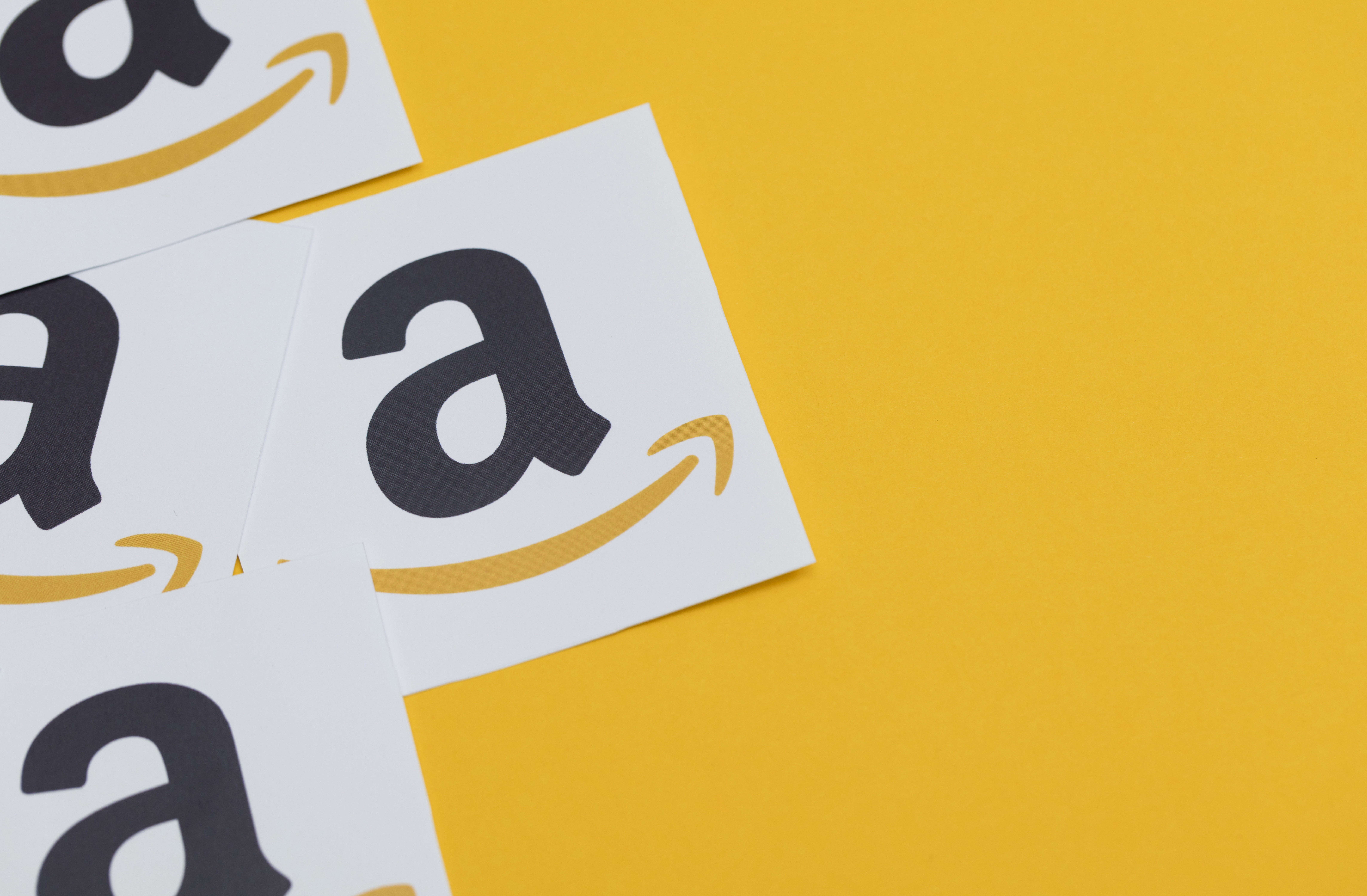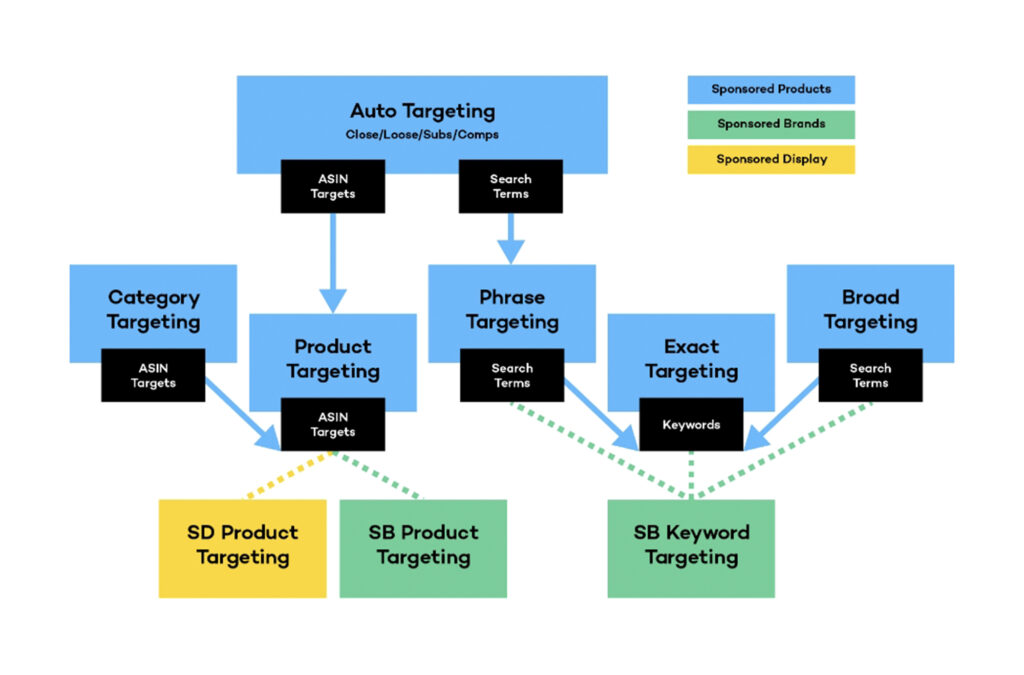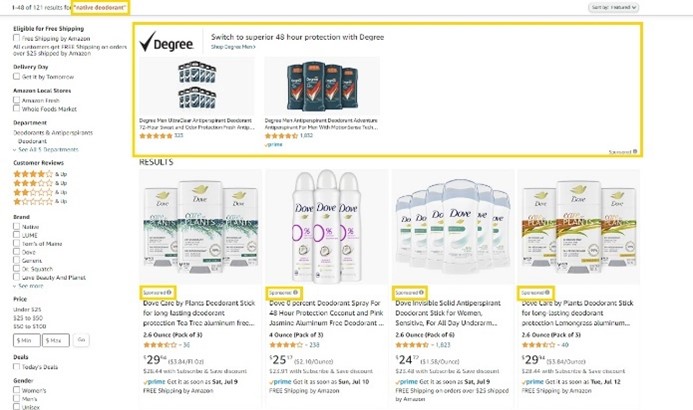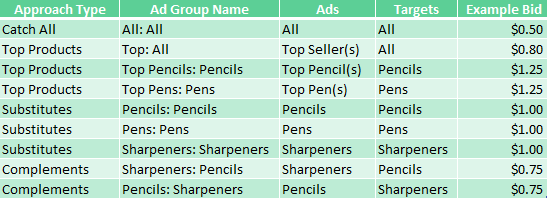
5 Amazon PPC Campaigns We Implement in Every Account
mARCH 1, 2024
In Amazon advertising, Sponsored Products strategies serve as the backbone for sellers aiming to enhance visibility, drive sales, and optimize profitability. With a plethora of tactics at your disposal, understanding and implementing the right strategies can significantly impact your brand’s success on the platform.
In this guide, we provide five pivotal Amazon PPC campaigns (plus a bonus!) that every seller should harness: Primary Campaign, Brand Defense, ASIN Defense, Catch-All, and Seeding. By dissecting each strategy’s intricacies, bidding strategies, and Top of Search setting (TOS), you’ll be well-equipped to navigate the complexities of Amazon advertising and launch your brand to new heights.
Primary Campaign: Maximizing Exposure and Profitability
Overview:
The Primary Campaign serves as the cornerstone for funneling general category keywords, competitor product targets, and even misspellings into more manageable campaigns. By leveraging campaign integrations and funnels, sellers can maximize exposure for high-performing targets while mitigating wasted spend on underperforming search terms.

Key Elements:
- Campaign Setup: Align like products in their own campaign series. Create Auto and Manual campaigns.
- Manual Campaign should have a Keyword ad group and a Product Target ad group
- Targeting: General category keywords, competitor product targets, and misspellings.
- Profitability: Allocate spend to high-performing targets with an ACoS that aligns with your margins, thereby enhancing conversion rates and profitability.
- Bidding Strategy: Dynamic – down only.
- TOS: 60%
Brand Defense: Safeguarding Your Market Share
Overview:
Brand Defense campaigns are paramount for safeguarding your market share and ensuring competitors do not capitalize on your brand’s success. By focusing solely on branded keywords, sellers can leverage custom-tailored placement settings and campaign-level controls to maintain brand loyalty and customer trust.

(Side note: A constant debate we hear in the Amazon advertising world – is it worth it to defend your brand or are you poaching organic sales? Here’s a way you can test that using the Search Query Performance report.)
Key Elements:
- Targeting: Branded keywords such as “coca cola,” “diet coke,” “12 pack diet coke.”
- Bidding Strategy: Fixed.
- TOS: 100%
ASIN Defense: Owning Your Product Pages
Overview:
ASIN Defense campaigns empower sellers to dominate their product detail pages, pushing competitors off their listings and capturing customer interest effectively. This strategy is particularly beneficial for sellers with multiple parent ASINs, allowing them to capitalize on cross-selling opportunities and enhance customer retention.
Key Elements:
- Targeting: Product targeting of seller’s other products.
- Bidding Strategy: Fixed.
- TOS: 0%
- Product Page Placement: 60%+ recommended.

Catch-All: Casting a Wide Net
Overview:
The Catch-All campaign functions as a safety net, generating incremental sales at a healthy ACoS by casting an extensive net with low bids. While not a major volume driver, this strategy is invaluable for capturing latent demand and optimizing overall advertising performance.
Key Elements:
- AUTO Catch All:
- Bidding Strategy: Up and down.
- TOS: 100%
- MANUAL Catch All:
- Bidding Strategy: Fixed.
- TOS: 200%
- Bids: Around the $0.10 mark or less.
- Segmentation: Include every product in the ad group (do not segment by product).
Seeding: Sowing what Your Listing Gave You
Overview:
Seeding campaigns should target broad match combinations of words from listing titles (shoot for 200+) and single word phrase match keywords harvested from search term reports based on single word density. Like Catch-All campaigns, Seeding campaigns aren’t meant to drive volume but they generate solid returns on ad spend (low ACoS) due to low CPCs.
Key Elements:
- MANUAL Seeding:
- Bidding Strategy: Dynamic Up & Down.
- TOS: 100%
- Ad Groups: Three – Broad, Phrase & Exact.
- Bids: Around the $0.15 mark or less.
- Segmentation: Include every product in each ad group (do not segment by product).
Conclusion
Mastering Amazon Sponsored Products requires a strategic blend of targeted campaigns, bidding strategies, and data-driven insights. By incorporating the above strategies in your advertising catalog, you’ll be well-positioned to optimize performance and enhance profitability. Don’t forget to keep an eye on new features and updates because as we all know, Amazon is ever evolving. Being agile along with a strong understanding of Amazon PPC fundamental strategies are what sets the best sellers apart from the average.